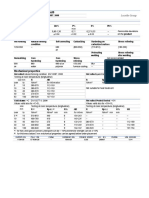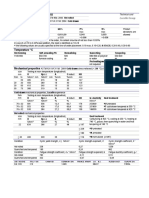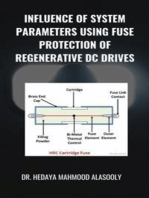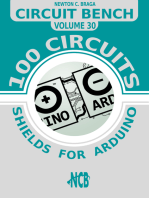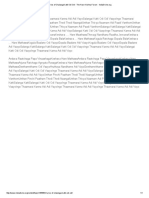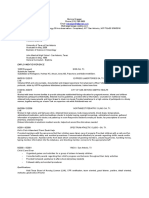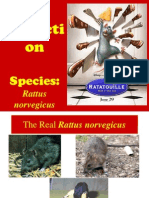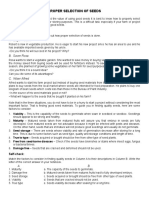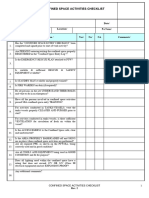0 ratings0% found this document useful (0 votes)
56 viewsQuality: Astm A 105
Quality: Astm A 105
Uploaded by
Venkat NarasimmanThis document provides information on ASTM A 105 steel, including its chemical composition limits and common heat treatment processes and properties. Some key points:
- The steel has specified maximum contents for various elements like carbon, silicon, manganese, phosphorus, and sulfur.
- Common heat treatments include normalizing, quenching and tempering, and stress relieving. Temperatures and processes are listed.
- Mechanical properties after different heat treatments are provided based on ASTM A 105M:03 standards and the manufacturer's test data, including requirements for yield strength, tensile strength, elongation and impact toughness.
- Equivalent standards from other regions like the EU, China, Germany,
Copyright:
© All Rights Reserved
Available Formats
Download as PDF, TXT or read online from Scribd
Quality: Astm A 105
Quality: Astm A 105
Uploaded by
Venkat Narasimman0 ratings0% found this document useful (0 votes)
56 views1 pageThis document provides information on ASTM A 105 steel, including its chemical composition limits and common heat treatment processes and properties. Some key points:
- The steel has specified maximum contents for various elements like carbon, silicon, manganese, phosphorus, and sulfur.
- Common heat treatments include normalizing, quenching and tempering, and stress relieving. Temperatures and processes are listed.
- Mechanical properties after different heat treatments are provided based on ASTM A 105M:03 standards and the manufacturer's test data, including requirements for yield strength, tensile strength, elongation and impact toughness.
- Equivalent standards from other regions like the EU, China, Germany,
Original Title
ASTMA105
Copyright
© © All Rights Reserved
Available Formats
PDF, TXT or read online from Scribd
Share this document
Did you find this document useful?
Is this content inappropriate?
This document provides information on ASTM A 105 steel, including its chemical composition limits and common heat treatment processes and properties. Some key points:
- The steel has specified maximum contents for various elements like carbon, silicon, manganese, phosphorus, and sulfur.
- Common heat treatments include normalizing, quenching and tempering, and stress relieving. Temperatures and processes are listed.
- Mechanical properties after different heat treatments are provided based on ASTM A 105M:03 standards and the manufacturer's test data, including requirements for yield strength, tensile strength, elongation and impact toughness.
- Equivalent standards from other regions like the EU, China, Germany,
Copyright:
© All Rights Reserved
Available Formats
Download as PDF, TXT or read online from Scribd
Download as pdf or txt
0 ratings0% found this document useful (0 votes)
56 views1 pageQuality: Astm A 105
Quality: Astm A 105
Uploaded by
Venkat NarasimmanThis document provides information on ASTM A 105 steel, including its chemical composition limits and common heat treatment processes and properties. Some key points:
- The steel has specified maximum contents for various elements like carbon, silicon, manganese, phosphorus, and sulfur.
- Common heat treatments include normalizing, quenching and tempering, and stress relieving. Temperatures and processes are listed.
- Mechanical properties after different heat treatments are provided based on ASTM A 105M:03 standards and the manufacturer's test data, including requirements for yield strength, tensile strength, elongation and impact toughness.
- Equivalent standards from other regions like the EU, China, Germany,
Copyright:
© All Rights Reserved
Available Formats
Download as PDF, TXT or read online from Scribd
Download as pdf or txt
You are on page 1of 1
Quality ASTM A 105 Technical card
According to standards ASTM A 105M - 03 Trafilix
Number -- Lucefin Group
Chemical composition
C% Si% Mn% P% S% Cu% Ni% Cr% Mo% V% Nb%
max max max max max max max max
0,35 0,10-0,35 0,60-1,05 0,035 0,040 0,40 0,40 0,30 0,12 0,08 0,02
The sum of copper (Cu), chromium (Cr), nickel (Ni) and molybdenum (Mo) shall not exceed 1,00%
The sum of chromium (Cr) and molybdenum (Mo) shall not exceed 0,32%
For each reduction of 0,01% below the specified carbon maximum (0,35), an increase of 0,06% manganese above the specific
maximum (1,05%) will be permitted up to a maximum of 1,35%
Calcium (Ca) treatment may be supplied on request
Al min 0,020%
Carbon Equivalent CE = C + Mn/6 + (Cr + Mo + V)/5 + (Ni + Cu)/ 15 max 0,47
Temperature °C
Hot forming Normalizing . Quenching Tempering Stress relieving
1150-850 843-927 880-930 593 50 under the temperature of
air cooling oil / polymer water air cooling tempering
Soft Normalizing Isothermal Preheating Stress relieving
annealing and Tempering annealing welding after welding (PWHT)
700 843-927 air 860 furnace 250 590 furnace cooling
air cooling cooling to AC1 AC3 MS Mf
593 air 660 after, air -- -- -- --
Mechanical properties Steel Forgings
make reference the values of Forgeds Heat treatments must grant below mentioned values ASTM A 105M: 03
dimension Testing at room temperature (longitudinal)
mm R Rp 0.2% A% L A% T C% L C% T Kv HB
over to N/mm2 min N/mm2 min. min. min. min. min. J min. max
-- T 485 250 22 -- 30 -- -- 187
Forged over 4540 Kg may be ordered to ASTM A 266/A 266M – 03a
R Rp 0.2% A% A% T C% L C% T Kv HB
N/mm2 N/mm2 min. min. min. min. min. J min.
-- T 415-585 205 23 20 38 30 -- 121-170
T= is the maximum heat-treated thickness. Ttest specimen shall correspond to the ¼ T
Product tests ( longitudinal ) TRAFILIX esperience
Heat treatment Ø product test at R Rp 0.2 A C-Z Kv 0°C Kv–18°C Kv -46°C product
mm °C N/mm2 N/mm2 % % J J J
Normalizing 920°C 90 +20 603 485 30 69.5 66-64-60 -- -- Hot-rolled
Normalizing 920°C 90 +400 312 217 -- -- -- -- -- Hot-rolled
Normalizing 900°C 240 +20 578 417 32.4 63.8 111-136-133 -- -- Hot-rolled
Normalizing 900°C 240 +400 506 248 -- -- -- -- -- Hot-rolled
Normalizing 900°C 400 +20 470 309 39.2 69.0 181-222-220 -- -- Forged
Normalizing 900°C 400 +400 424 206 -- -- -- -- -- Forged
Quenched end tempered 95 +20 579 403 35.6 68.6 210-203-207 -- -- Hot-rolled
Quenched and tempered 95 +400 520 325 -- -- -- -- -- Hot-rolled
Natural 90 +20 580 400 28.0 63.0 20-18-18 14-12-12 10-8-8 Hot-rolled
EUROPE EN ITALY UNI CHINA GERMANY DIN FRANCE AFNOR U.K. B.S. RUSSIA USA AISI/SAE
-- -- -- C21 -- -- 20G A 105
You might also like
- Robert J Hoffman MD MS Vincent J Wang MD MHA Richard J SC - Fleisher Ludwigs 5-Minute Pediatric Emergency Medicine Consult 2019 LWW - LibgenliDocument3,895 pagesRobert J Hoffman MD MS Vincent J Wang MD MHA Richard J SC - Fleisher Ludwigs 5-Minute Pediatric Emergency Medicine Consult 2019 LWW - LibgenliNicole Juliette CCNo ratings yet
- Astm A350 LF2 PDFDocument1 pageAstm A350 LF2 PDFAna Raquel SantosNo ratings yet
- Weld Like a Pro: Beginning to Advanced TechniquesFrom EverandWeld Like a Pro: Beginning to Advanced TechniquesRating: 4.5 out of 5 stars4.5/5 (6)
- DD1 Black Book - Centre For Ancient Therapy by SushilKumar Gupta - 15 Nov 2019Document141 pagesDD1 Black Book - Centre For Ancient Therapy by SushilKumar Gupta - 15 Nov 2019SushilKumar GuptaNo ratings yet
- Psychoanalytical Criticism of Ola Rotimi's The Gods Are Not To BlameDocument4 pagesPsychoanalytical Criticism of Ola Rotimi's The Gods Are Not To BlameJoyinyang90% (10)
- Astm A350 LF2Document1 pageAstm A350 LF2anjangandak2932100% (1)
- 11 SMN PB 30Document1 page11 SMN PB 30kgkganesh8116No ratings yet
- Quality 11Smn30: Lucefin GroupDocument1 pageQuality 11Smn30: Lucefin GroupPaulo ZechinNo ratings yet
- Quality 11Smnpb37: Lucefin GroupDocument1 pageQuality 11Smnpb37: Lucefin GroupPaulo ZechinNo ratings yet
- 11 SMN PB 37Document1 page11 SMN PB 37RasheshNo ratings yet
- Quality C10E: Lucefin GroupDocument3 pagesQuality C10E: Lucefin Grouptuananh638No ratings yet
- Quality C10E: Lucefin GroupDocument3 pagesQuality C10E: Lucefin Grouptuananh638No ratings yet
- S275JRDocument1 pageS275JRShahzad QamarNo ratings yet
- 16 Ni CR 11Document2 pages16 Ni CR 11ceca nikolicNo ratings yet
- AISI416Document2 pagesAISI416shamsi862620No ratings yet
- S235JR Sau OL 37Document1 pageS235JR Sau OL 37Pișta GonzalesNo ratings yet
- CR Mo 4Document2 pagesCR Mo 4Mohsen ParpinchiNo ratings yet
- XC 38 H 1Document1 pageXC 38 H 1smith willNo ratings yet
- Tempering Conditions For 30CrNiMo8Document2 pagesTempering Conditions For 30CrNiMo8madyeNo ratings yet
- 41 CR 4Document2 pages41 CR 4Jhon ChitNo ratings yet
- Astm A105Document1 pageAstm A105Isaac SamuelNo ratings yet
- Sae 1045Document1 pageSae 1045Martin UrrizaNo ratings yet
- 20 MN CR 5Document2 pages20 MN CR 5sansmgNo ratings yet
- 40NiCrMo7 PDFDocument2 pages40NiCrMo7 PDFAmy Griffin0% (1)
- Quality S275J2: Structural SteelDocument1 pageQuality S275J2: Structural Steeloussama somraniNo ratings yet
- SAE 1018 - Data Sheet PDFDocument1 pageSAE 1018 - Data Sheet PDFHari SuthanNo ratings yet
- 02 Asae 101892Document1 page02 Asae 101892raviteja036No ratings yet
- C53 Technical CardDocument1 pageC53 Technical CardAnonymous umabEI6No ratings yet
- 30 CR Ni Mo 8Document2 pages30 CR Ni Mo 8Amy GriffinNo ratings yet
- E295 PDFDocument1 pageE295 PDFNunoAfonsoNo ratings yet
- 1528450631SAE1018080A15Document2 pages1528450631SAE1018080A15bs7698210No ratings yet
- 102 CR 6Document2 pages102 CR 6ceca nikolicNo ratings yet
- Quality C43: Flame and Induction Hardening SteelDocument2 pagesQuality C43: Flame and Induction Hardening SteelVĩ Trần KhangNo ratings yet
- Quality 1.4021 Chemical Composition: Lucefin GroupDocument2 pagesQuality 1.4021 Chemical Composition: Lucefin GroupSonNguyenNo ratings yet
- 42 CR Mo 4Document2 pages42 CR Mo 4ElMacheteDelHuesoNo ratings yet
- 20Mncr5: Steel GradeDocument4 pages20Mncr5: Steel GradeAhmad ShujaNo ratings yet
- 36NiCrMo16 PDFDocument2 pages36NiCrMo16 PDFAmy GriffinNo ratings yet
- SMN PB 30Document1 pageSMN PB 30sobheysaidNo ratings yet
- En10083-2 - 1996 - C35eDocument3 pagesEn10083-2 - 1996 - C35ealextentwentyNo ratings yet
- Alloy Steel p22 PlatesDocument3 pagesAlloy Steel p22 PlatesMiguel PulidoNo ratings yet
- 34 CR Mo 4Document2 pages34 CR Mo 4Stefan GhNo ratings yet
- C45EDocument3 pagesC45ETrương Định100% (1)
- 16MnCr5 SpesifikasiDocument2 pages16MnCr5 SpesifikasibagusalienNo ratings yet
- Quality: Astm A 105Document1 pageQuality: Astm A 105lavius_mNo ratings yet
- Sandvik 254 Smo Tube and Pipe, Seamless: DatasheetDocument9 pagesSandvik 254 Smo Tube and Pipe, Seamless: DatasheetReadersmoNo ratings yet
- 51 CR V4Document4 pages51 CR V4armin_kunosic9871No ratings yet
- 90 MN CR V8Document1 page90 MN CR V8arunajay724No ratings yet
- 1.4125 440c PDFDocument2 pages1.4125 440c PDFsuntansueNo ratings yet
- 34 CR Mo 4Document2 pages34 CR Mo 4ceca nikolicNo ratings yet
- 34 CR Ni Mo 6Document2 pages34 CR Ni Mo 6hp_vijayk0% (1)
- Influence of System Parameters Using Fuse Protection of Regenerative DC DrivesFrom EverandInfluence of System Parameters Using Fuse Protection of Regenerative DC DrivesNo ratings yet
- Ceramic Materials for Energy Applications V: A Collection of Papers Presented at the 39th International Conference on Advanced Ceramics and CompositesFrom EverandCeramic Materials for Energy Applications V: A Collection of Papers Presented at the 39th International Conference on Advanced Ceramics and CompositesJosef MatyášNo ratings yet
- Deactivation of Heavy Oil Hydroprocessing Catalysts: Fundamentals and ModelingFrom EverandDeactivation of Heavy Oil Hydroprocessing Catalysts: Fundamentals and ModelingNo ratings yet
- Advanced and Refractory Ceramics for Energy Conservation and EfficiencyFrom EverandAdvanced and Refractory Ceramics for Energy Conservation and EfficiencyHua-Tay LinNo ratings yet
- Gas-Engines and Producer-Gas Plants A Practice Treatise Setting Forth the Principles of Gas-Engines and Producer Design, the Selection and Installation of an Engine, Conditions of Perfect Operation, Producer-Gas Engines and Their Possibilities, the Care of Gas-Engines and Producer-Gas Plants, with a Chapter on Volatile Hydrocarbon and Oil EnginesFrom EverandGas-Engines and Producer-Gas Plants A Practice Treatise Setting Forth the Principles of Gas-Engines and Producer Design, the Selection and Installation of an Engine, Conditions of Perfect Operation, Producer-Gas Engines and Their Possibilities, the Care of Gas-Engines and Producer-Gas Plants, with a Chapter on Volatile Hydrocarbon and Oil EnginesNo ratings yet
- Advances in Solid Oxide Fuel Cells and Electronic CeramicsFrom EverandAdvances in Solid Oxide Fuel Cells and Electronic CeramicsNo ratings yet
- Tropical Cyclone NamingDocument1 pageTropical Cyclone NamingVenkat NarasimmanNo ratings yet
- ASTM A210 - ASME SA210 Standard Specification For Seamless Medium-Carbon Steel Boiler and Superheater TubesDocument3 pagesASTM A210 - ASME SA210 Standard Specification For Seamless Medium-Carbon Steel Boiler and Superheater TubesVenkat NarasimmanNo ratings yet
- QTIWOS9BMJA5TQDocument3 pagesQTIWOS9BMJA5TQquiensabe0077No ratings yet
- Pazhani Andavar Bhavani PDFDocument1 pagePazhani Andavar Bhavani PDFVenkat NarasimmanNo ratings yet
- Salangai Katti Odi OdiDocument1 pageSalangai Katti Odi OdiVenkat NarasimmanNo ratings yet
- Vishmakara KannanDocument1 pageVishmakara KannanVenkat NarasimmanNo ratings yet
- Hazardous Area ClassificationDocument2 pagesHazardous Area ClassificationRatnakar Pai100% (1)
- Monica DraegerDocument1 pageMonica Draegerapi-310977516No ratings yet
- George Robbins Considers Himself An Aggressive Investor He S Thinking AboutDocument1 pageGeorge Robbins Considers Himself An Aggressive Investor He S Thinking AboutAmit PandeyNo ratings yet
- Report On Integration of Gad Concepts in The Different Learning Areas S.Y. 2020-2021Document3 pagesReport On Integration of Gad Concepts in The Different Learning Areas S.Y. 2020-2021Irine IrineNo ratings yet
- Bit Selection HandbookDocument14 pagesBit Selection HandbookNelson de la RosaNo ratings yet
- Darien YMCA Fall 2022 BrochureDocument22 pagesDarien YMCA Fall 2022 BrochurePatty KaneNo ratings yet
- Rat DissectionDocument35 pagesRat DissectionCLPHtheoryNo ratings yet
- Xavier Carpenter - 3. FDR and The New Deal SpreadsheetDocument3 pagesXavier Carpenter - 3. FDR and The New Deal SpreadsheetcarpexavNo ratings yet
- Proper Selection of SeedsDocument1 pageProper Selection of Seedsalmors100% (1)
- DC Motor Hard Copy ReportDocument13 pagesDC Motor Hard Copy ReportShang Divina Ebrada100% (1)
- WP Contentuploads202306FA MS PrefereApr23online PDFDocument24 pagesWP Contentuploads202306FA MS PrefereApr23online PDFLet’s Cook HappilyNo ratings yet
- Environmental Conditions and Test Procedures For Airborne Equipment, DatedDocument2 pagesEnvironmental Conditions and Test Procedures For Airborne Equipment, DatedLuis CrespoNo ratings yet
- Confined Space Activities ChecklistDocument2 pagesConfined Space Activities ChecklistFaiz FalehNo ratings yet
- Solution of Sample Paper by AdarshDocument12 pagesSolution of Sample Paper by Adarshadarsh singhNo ratings yet
- Product Data Sheet Vanellus C3 Mono 40: DescriptionDocument2 pagesProduct Data Sheet Vanellus C3 Mono 40: DescriptionsanathcgrNo ratings yet
- Cambra PDFDocument10 pagesCambra PDFSharlene OngNo ratings yet
- A Study On Use of Rice HUsk Ash in Concrete - M.B.G Sameer KumarDocument94 pagesA Study On Use of Rice HUsk Ash in Concrete - M.B.G Sameer KumarNarayan Singhania100% (21)
- ReinsuranceDocument80 pagesReinsuranceutsavs_633% (3)
- Purnata Patil: Progist Solutions LLPDocument2 pagesPurnata Patil: Progist Solutions LLPRaj PrasadNo ratings yet
- Process Fluid FlowDocument24 pagesProcess Fluid FlowAshira GordhanNo ratings yet
- Summative Grade 8Document3 pagesSummative Grade 8Joshua DoradoNo ratings yet
- Air Conditioning and Pressurisation 1Document147 pagesAir Conditioning and Pressurisation 1Ricardo Jose Navarro Pacheco100% (1)
- 100 Important Geography Questions: S.No. AnswerDocument3 pages100 Important Geography Questions: S.No. AnswerShashank Pathak100% (2)
- JS iG5A Manual English Frequency Converter Inverter VFD SDocument109 pagesJS iG5A Manual English Frequency Converter Inverter VFD SPhi TrầnNo ratings yet
- Stirrer ManUALDocument16 pagesStirrer ManUALGirish GuptaNo ratings yet
- 02-Annexure - Electrical System Design ParametersDocument6 pages02-Annexure - Electrical System Design ParametersPrasenjit DeyNo ratings yet
- Seve Samar Pan PDFDocument64 pagesSeve Samar Pan PDFSarasaNo ratings yet







